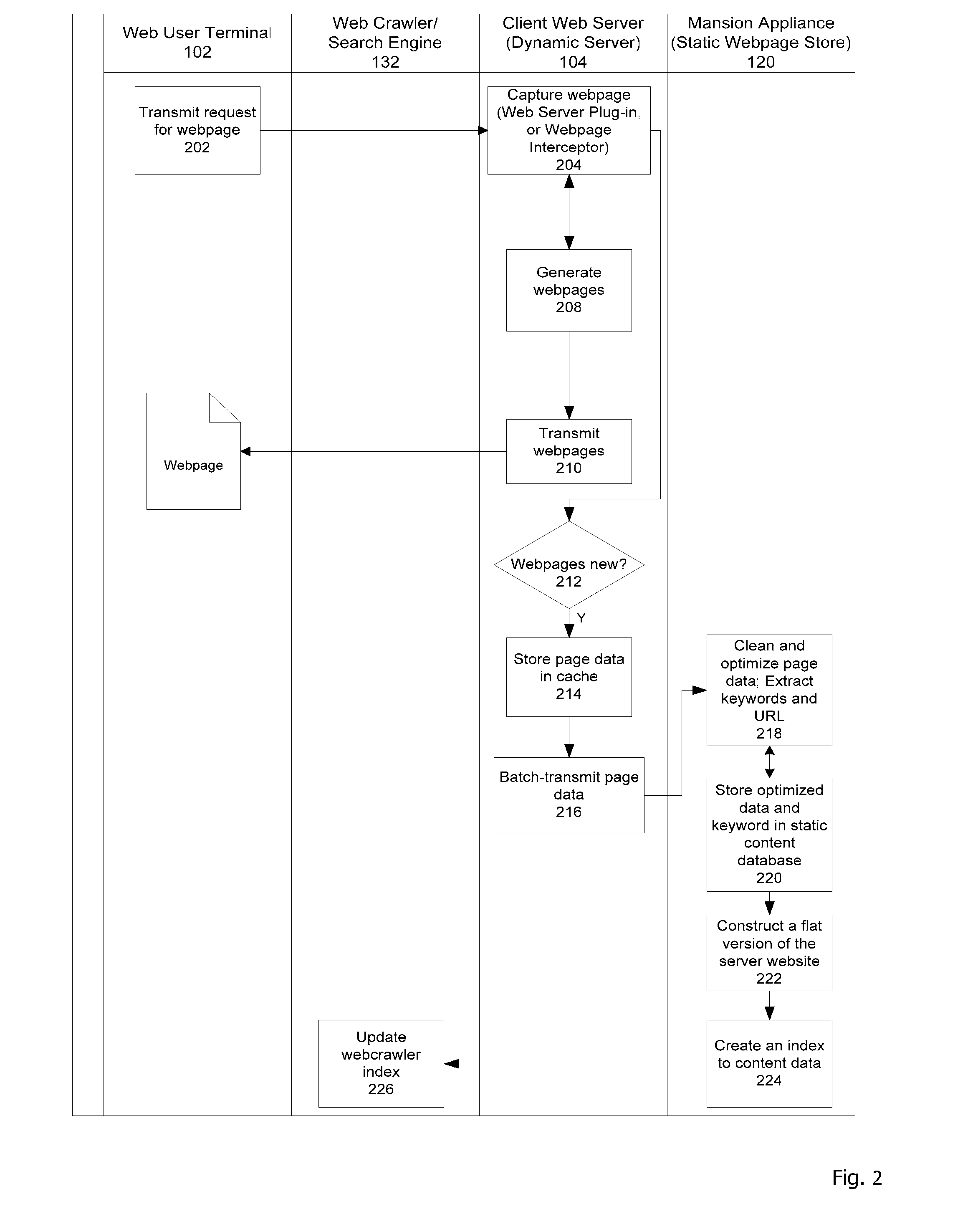System and method for providing visibility for dynamic webpages
a dynamic webpage and visibility technology, applied in the field of system and method for providing visibility, can solve the problems of requiring some time, web crawlers may become “lost”, obsolete webpages are returned, outdated versions of webpages, etc., and achieve the effect of fortifying the relevancy of overall web page conten
- Summary
- Abstract
- Description
- Claims
- Application Information
AI Technical Summary
Benefits of technology
Problems solved by technology
Method used
Image
Examples
Embodiment Construction
[0033]FIG. 1 illustrates a system that provides visibility of dynamic webpages to search engines according to an example embodiment of the present invention. A terminal 102 may send webpage requests to a dynamic webpage server 104 which may include a processor 106 to execute program instructions stored in a memory 108, e.g., a hardware-implemented computer-readable medium, for handling the requests. Receipt of the requests may trigger dynamic webpage generation routines including execution of programs including extensions. The request may initially be handled by a web server plug-in, also referred to herein as a webpage interceptor 112. The webpage interceptor 112 may be implemented as an extension, for example, as an Internet Server Application Programming Interface (“ISAPI”) extension that runs on an Internet Information Services (“IIS”) server. The interceptor 112 may record the request and forward it to a webpage generator 110. The webpage generator 110 may access a dynamic data...
PUM
 Login to View More
Login to View More Abstract
Description
Claims
Application Information
 Login to View More
Login to View More - R&D
- Intellectual Property
- Life Sciences
- Materials
- Tech Scout
- Unparalleled Data Quality
- Higher Quality Content
- 60% Fewer Hallucinations
Browse by: Latest US Patents, China's latest patents, Technical Efficacy Thesaurus, Application Domain, Technology Topic, Popular Technical Reports.
© 2025 PatSnap. All rights reserved.Legal|Privacy policy|Modern Slavery Act Transparency Statement|Sitemap|About US| Contact US: help@patsnap.com



